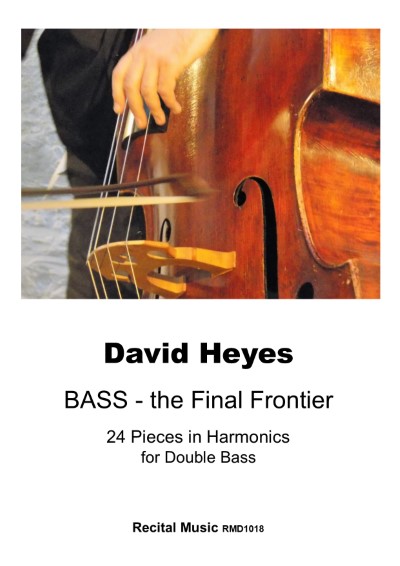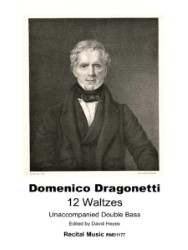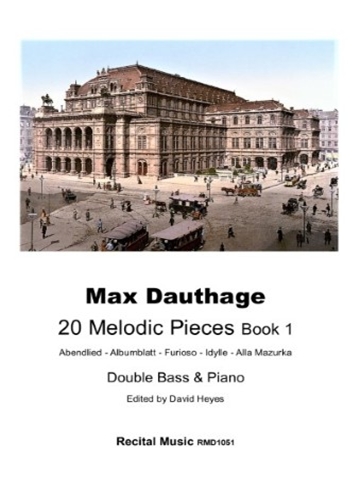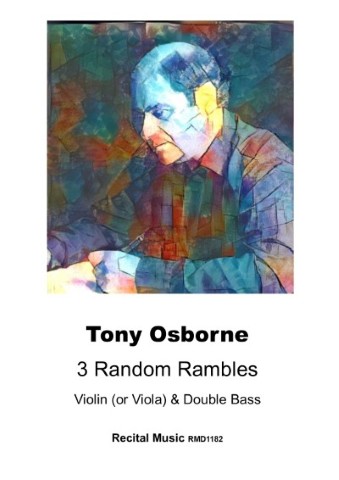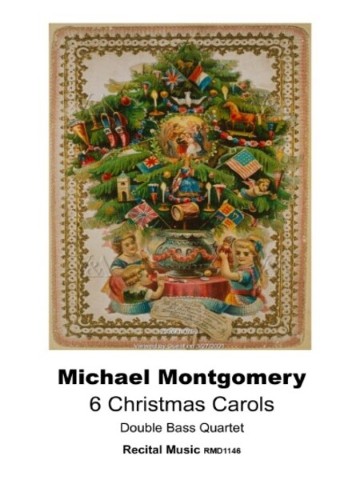Description
BASS – the Final Frontier includes 24 pieces in harmonics – 20 are short and simple, featuring a limited number of notes, concluding with four concert works, which are …more advanced and explore much of the range of the double bass. Each of the shorter pieces includes a list of the notes used, noting the string to play them on and with which finger, and + indicates that the thumb is used to play the note.
BASS – the Final Frontier is an introduction to playing the most straightforward harmonics, although a few false harmonics and ones played in the lower positions are included to add variety and contrast. There are no tempo, dynamic or expression marks and each bassist should feel confident to customise each piece as necessary.
Harmonics are a fun addition to the skills of the double bassist, of any age or ability, and open up a new world which is exciting and endlessly fascinating.
“Mr Heyes is mad about harmonics!” was an overheard comment from one of my young students to his parents at a bass workshop many years ago. In the intervening thirty years not much has changed and I still love playing harmonics, also teaching my students how to play them. My fascination began in the late 1970s when I was introduced to harmonics in Bottesini’s Elegia and the Dragonetti/Nanny Concerto by two of my teachers, Laurence Gray and Bronwen Naish. Bronwen had studied with Gary Karr and played many virtuosic Bottesini pieces in her recitals and, following her example, I was determined to do the same. As soon as you start to play harmonics and understand how they work, but more importantly when they don’t, it’s a journey which is endlessly fascinating as you discover the natural and false harmonics which you can play across the entire range of the double bass.”
[David Heyes/January 2022]
“David Heyes has done it all! From first position through each section of the fingerboard, David has written beautiful pieces that teach the technical aspects of the fingerboard while keeping the student (and teacher) engaged. The latest book in this series is no exception. David has written twenty lovely short pieces that teach harmonics – how to find them, how to make them speak beautifully, and how to read them (which is, initially, no easy task). I especially love that he also included four longer performance pieces so when the student is ready, she/he has access to fabulous music that employs these newly-learned techniques. The book also comes with a very handy chart explaining where to find each harmonic to eliminate any potential confusion.
What a treasure this book is – it’s sure to find its way into the frequently-used music collections of many players, teachers, and students!!”
[Susan Hagen / Berklee College of Music / Principal Bass, Boston Pops Esplanade Orchestra]
Harmonics can be found across the entire range of the double bass and are used extensively throughout the solo, Repertoire. They work best on the G and D strings but can also be played on the lower strings.
The octave harmonic that is usually played with the 3rd finger or thumb, one octave above the open string, is the centre of the instrument. Any harmonic which can be played above this note can also be played in a lower position.
BASS – the Final Frontier is an introduction to playing the simplest harmonics at the end of the fingerboard, alongside four longer concert works which explore a wide range of the double bass. Many composers have included harmonics throughout the virtuosic, Repertoire but the 21st-century has seen the introduction of simple harmonics into beginner pieces, ensuring young bassists have no fear of them and understand how to play and control them.
Natural harmonics sound the written note and pitch but false harmonics, often played with thumb and 3rd finger together, sound at a different pitch to the one notated.
A few things to remember when playing harmonics:
+ indicates the use of the thumb
The bow should be played towards the bridge
Lighten the bow pressure
The bow has to keep moving for the harmonic to sound
Touch the harmonic lightly with your finger
Only place one finger on the string at any time
Enjoy the sound and aim for a clear and ringing tone
The title of this book was suggested by one of the younger students of the composer and, because harmonics are usually one of the final things to be taught and studied on the double bass, it seemed absolutely perfect. A quick search on the internet helped to find suitable movement titles with the aim of creating short pieces which have both a musical and educational worth. Each features a limited number of notes with a number of time signatures used to add contrast and variety.
The final four pieces are intended as both study and concert works.
21. La Gioconda (Mona Lisa) was composed in 2019 as part of Da Vinci 500 to commemorate the 500th anniversary of the death of Leonardo da Vinci (1452-1519). It is the second movement from ‘The Joy of Understanding’ and was premiered on Thursday 2 May 2019 at Silk Mill West (Frome, Somerset) by David Heyes.
La Gioconda or the Mona Lisa has been described as “the best known, the most visited, the most written about, the most sung about, the most parodied work of art in the world”. The painting is a portrait of Lisa Gherardini, the wife of Francesco del Giocondo, and is believed to have been painted between 1503 and 1506; however, Leonardo may have continued working on it as late as 1517. It was acquired by King Francis I of France and is now the property of the French Republic, on permanent display at the Louvre Museum in Paris since 1797. La Gioconda is played entirely in harmonics and the opening and recurring four note motif represents her smile, described as enigmatic but also alluring and aloof. The music is simple and straightforward, evocative and atmospheric, exploring the flute-like sounds of the double bass harmonics in a lyrical and sonorous idiom, with a gentle ebb and flow.
22. Afon Dwyfor is the third movement of ‘Scenes of Snowdonia’ and was composed in 2019 as an 80th birthday present for double bassist Bronwen Naish, David Heyes studied with Bronwen during the late 1970s and they have remained friends to this day. Afon Dwyfor is the stream which gently flows past Bronwen’s cottage in Cwm Pennant, often described as ‘the most beautiful valley in Wales’. Afon Dwfor means ‘big holy river’ in Welsh and flows gently through the valley and gathers together many streams before leaving Snowdonia National Park. The piece is slow and serene, hypnotic almost, contrasting slow harmonic motifs with the grounding of open strings played pizzicato.
Afon Dwyfor was premiered on Sunday 21 July 2019 at Church Crookham Memorial Hall, Fleet (Hampshire) by David Heyes
23. Nocturne No.2 was composed in 2018 and the commission asked for three pieces, each lasting around 90 seconds and in bass clef.
Three Nocturnes were commissioned by P. Kellach Waddle in Texas (USA), to whom they are also dedicated. They were composed in November/December 2018 and revised and completed on 26/27 December. The overall mood is dark and evocative, exploring the lower register of the double bass primarily, with slow tempi and a generally expressive and legato feel throughout. Nocturne No.2 employs simple harmonics in lower positions with an open string drone played pizzicato, contrasting the dark and brooding sounds of the first nocturne which is slow moving and sonorous. The tempo remains fairly constant throughout, although the music should have ebb and flow, with a palette of dark colours to explore the mysterious and atmospheric potential of the solo double bass.
Nocturne No.2 was premiered by David Heyes on Saturday 12 January 2019 at Wells & Mendip Museum, Wells, Somerset.
24. Floating through Space was composed in January 2022 to demonstrate the chordal possibilities when playing harmonics at the end of the fingerboard. The music has a gentle simplicity, evoking the slow and graceful movements in zero gravity, and a smooth and relaxed bow speed will help to control the harmonics and to convey the weightlessness and grace of floating in space alongside exciting space travel and exploration.
Programme Notes by David Heyes

